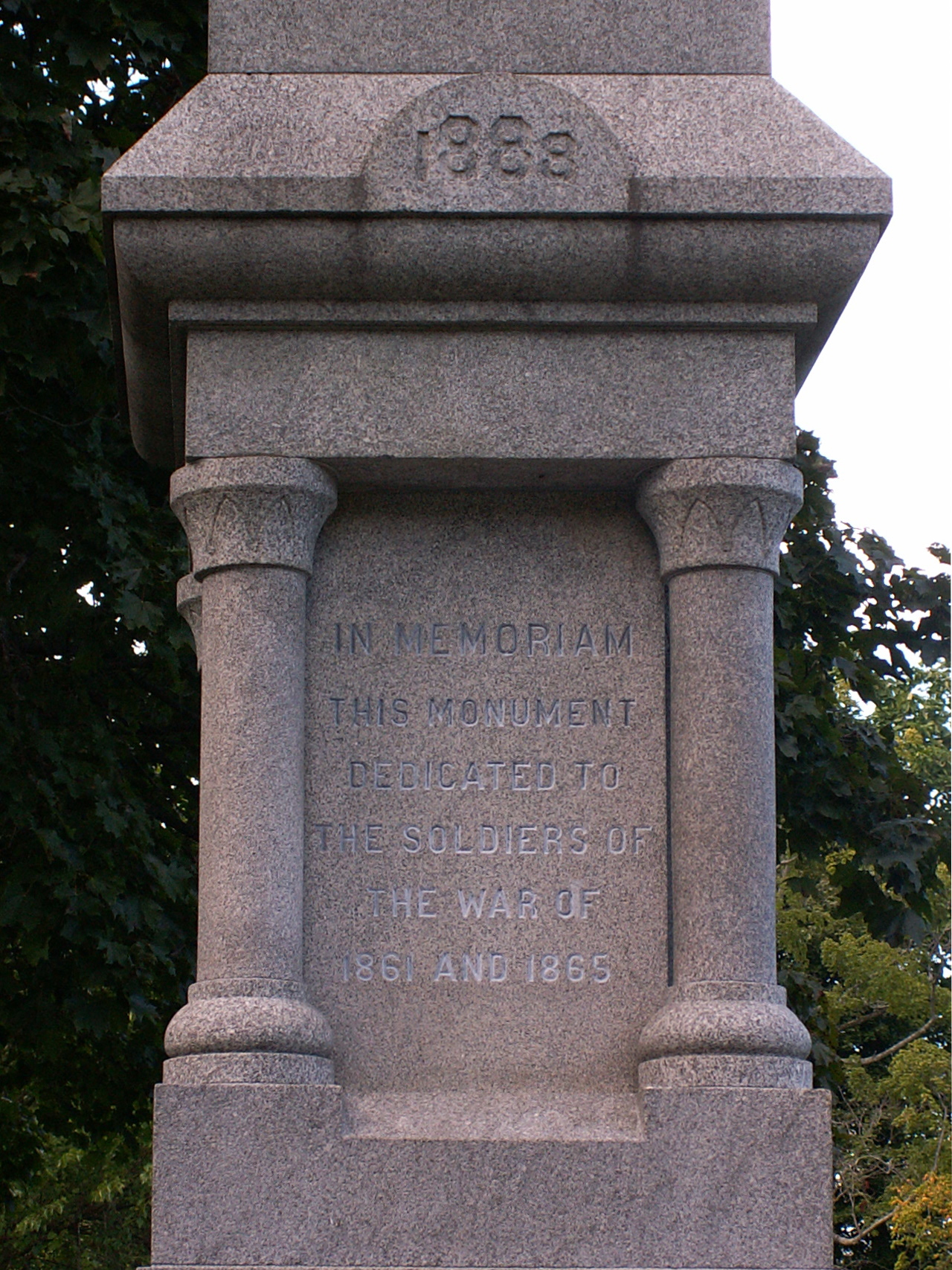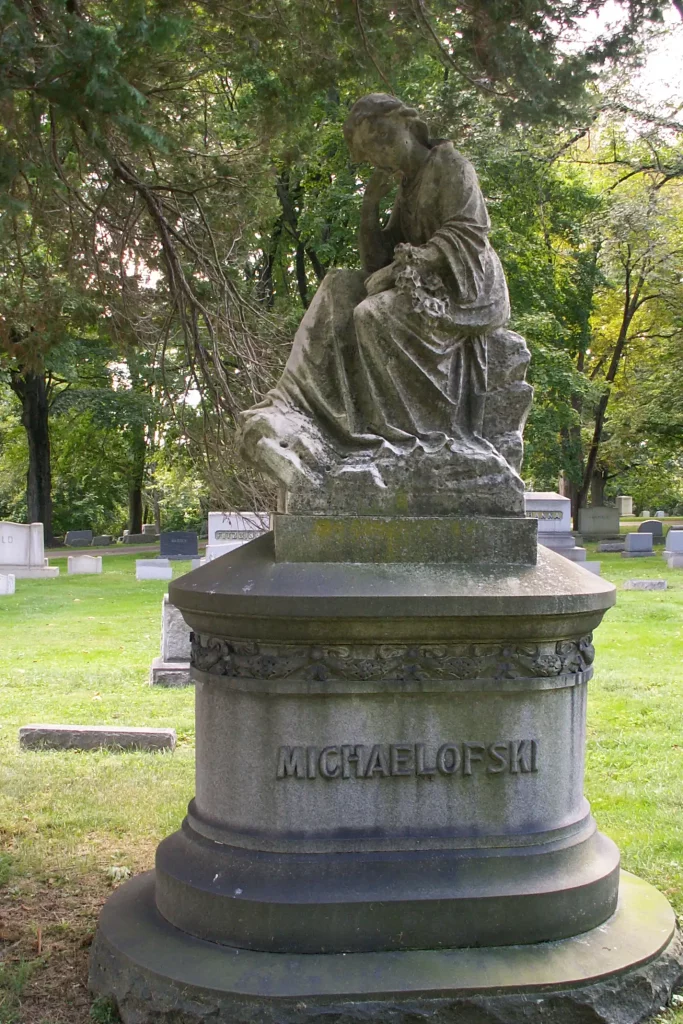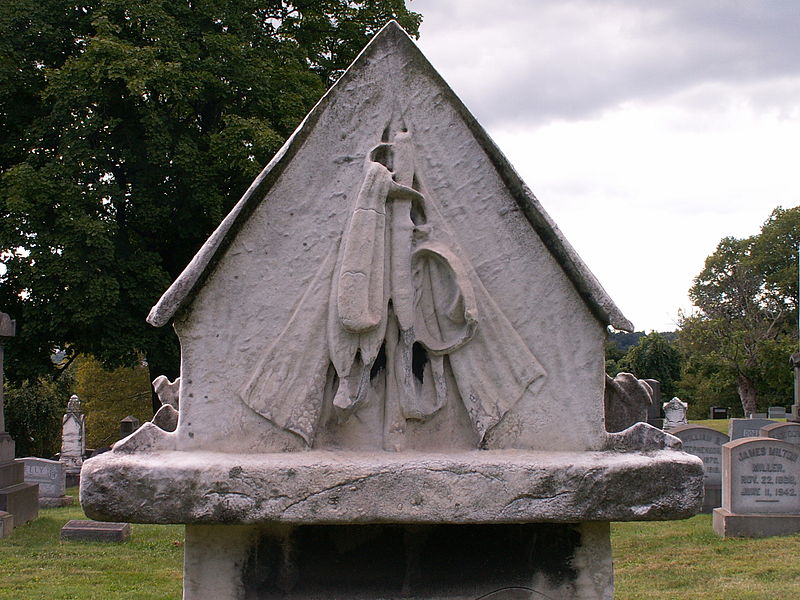
The statue of a soldier looks very determined in a chunky 1880s way. When granite replaced marble as the material of choice for monument sculptors, it seems as though it took them a while to learn how to convey any subtlety in the harder stone.




A set of rustic boulders, with a bronze relief depicting a weeping angel (Doctor Who fans will be pleased) overcome in the middle of his harp-playing. Unambiguously male angels are actually rare in monuments around here; and although this was probably a monument-dealer’s stock monument, the bronze relief is a fine piece of work.

The base is in fine shape, but the marble mourner is woefully eroded. It is a peculiar property of stone mourners, by the way, that, no matter how symmetrically classical the base of the monument may be, they always sit or stand on piles of rustic stone.
Father Pitt could not find a Michaelofski headstone in this plot, or any other inscription on the monument. It seems almost as if the plot was purchased, and this expensive monument erected, and then no one was ever buried here. The cemetery records compiled by Mr. Norman J. Meinert list a John Michaelofski as having died in 1918, but the date comes from “death notices,” not a stone in the cemetery. A kind correspondent has pointed out that an Anna Michaelofski is recorded in county death certificates as having died in 1915; she was also buried in this cemetery.


Old Pa Pitt has never seen another monument remotely like this one: a very realistic rendition of a soldier’s tent in marble. The marble has eroded, and the inscriptions are nearly illegible, but the name “Glass” and the date “Died May 15, 1864” are clear. Cemetery records indicate that the rest of the name is Michael A. Glass, but give us no birth date.



This marble monument has eroded badly, and old Pa Pitt was not able to read any of the original inscriptions (more were added later) except the unusual and very fine script “Dunlap.” A marble statue has lost its head and most of its other characteristics, and the inscriptions on the open book have been utterly obliterated. Nevertheless, the form of the monument is still striking and artistic. If Father Pitt had to hazard a guess, he would date it to the 1860s.

